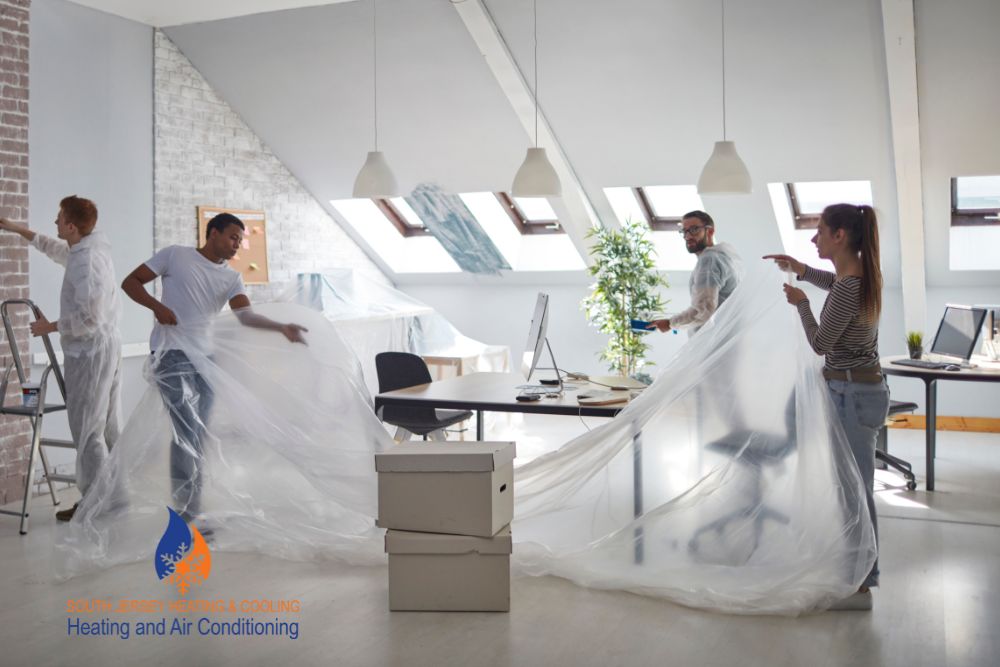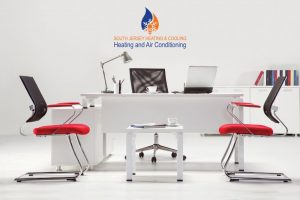Practical Ways to Improve your Company’s Indoor Air Quality
The Environmental Protection Agency (EPA) estimates that poor indoor air quality costs the U.S. economy tens of billions of dollars annually due to illness and lost productivity. Although it’s a year-round problem, the effects of bad indoor air quality tend to be most noticeable in spring. Now is a great time to assess your space, and here are some practical solutions that will help you and your employees breathe a sigh of relief.
Consider Your Furniture Placement
Office furniture and equipment should be placed in a manner that promotes good airflow throughout. As such, it’s imperative they do not block registers or air return vents. Likewise, you should ensure boxes of stored items do not interfere with your system’s operation.
Adequate clearance is important, even in rarely-used spaces such as storage rooms. Blocked vents in one area can easily cause your entire unit to become off-balance. Visually inspect all vent locations, and add blocked ones to your spring cleaning to-do list.
Carefully Manage Chemicals and Pollutants
Many paints, solvents, and cleaners used in commercial applications emit harmful fumes that can further degrade indoor air quality. Accordingly, it’s imperative to take precautions whenever possible by:
- Switching to only natural cleaners wherever practical
- Having a separate work area where solvents and chemicals are used. Choose a location with good ventilation, preferably a window you can open to allow fresh air to come in.
- Asking your pest control technician to provide only necessary treatments and to use natural solutions when available
- Establishing a policy regarding the use of scented candles, air fresheners, etc.
- Allowing employees to slightly crack open windows in order to let the cleaner, outside air in
Plan Renovations and Upgrades Carefully
According to the American Lung Association (ALA), building materials containing plywood or pressed wood can emit harmful gasses. Paint and carpeting can also let off Volatile Organic Compounds (VOCs) that degrade indoor air quality. So you’ll need to take extra precautions if you plan to upgrade or remodel your office. Some ways in which you can do so include:
- Choosing low-VOC paint
- Looking for carpet or furniture made from natural materials such as wool
- Asking your contractor to air out carpeting or other materials for at least three days prior to installation
- Having your building tested for asbestos if it is more than 50 years old
- Setting up partitions or temporarily relocating while any remodeling projects are ongoing

Maintain Your HVAC System
Your HVAC system constantly takes in outside air and circulates it throughout your facility. This means it is the first line of defense against indoor air pollution. A well-maintained ventilation system eliminates dust, pollen, and other particles from the outside and prevents them from dispersing inside. Commercial heating and cooling units also help filter any particles that are present in your indoor air, as well.
The condition of your ductwork will also play a role in your indoor air quality. Ductwork that’s leaking may allow an excessive amount of dirt and debris to enter your space. In addition, mold, mildew, and fungi can sometimes form inside the ductwork, particularly if you have also experienced a moisture problem.
Want Better Indoor Air Quality? Contact Us
Improving your indoor air quality begins with one of our comprehensive maintenance programs. A regular tune-up and cleaning will allow your system to operate at peak efficiency so that you can too. But that isn’t always enough to provide maximum results, in which case we can also suggest an air cleaner or humidifier to help. Contact South Jersey Heating and Cooling to schedule a consultation so that your entire staff can begin breathing easier.









